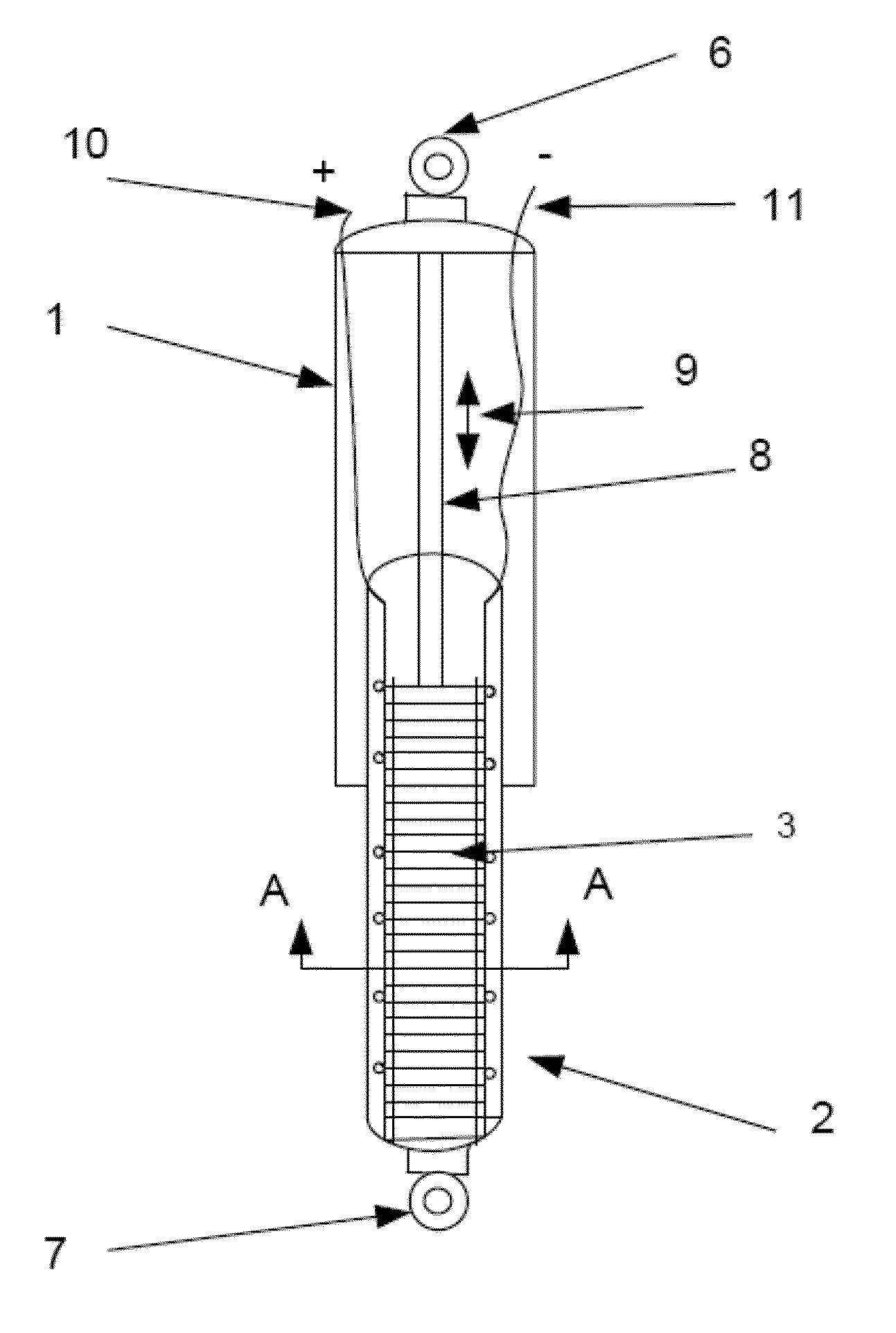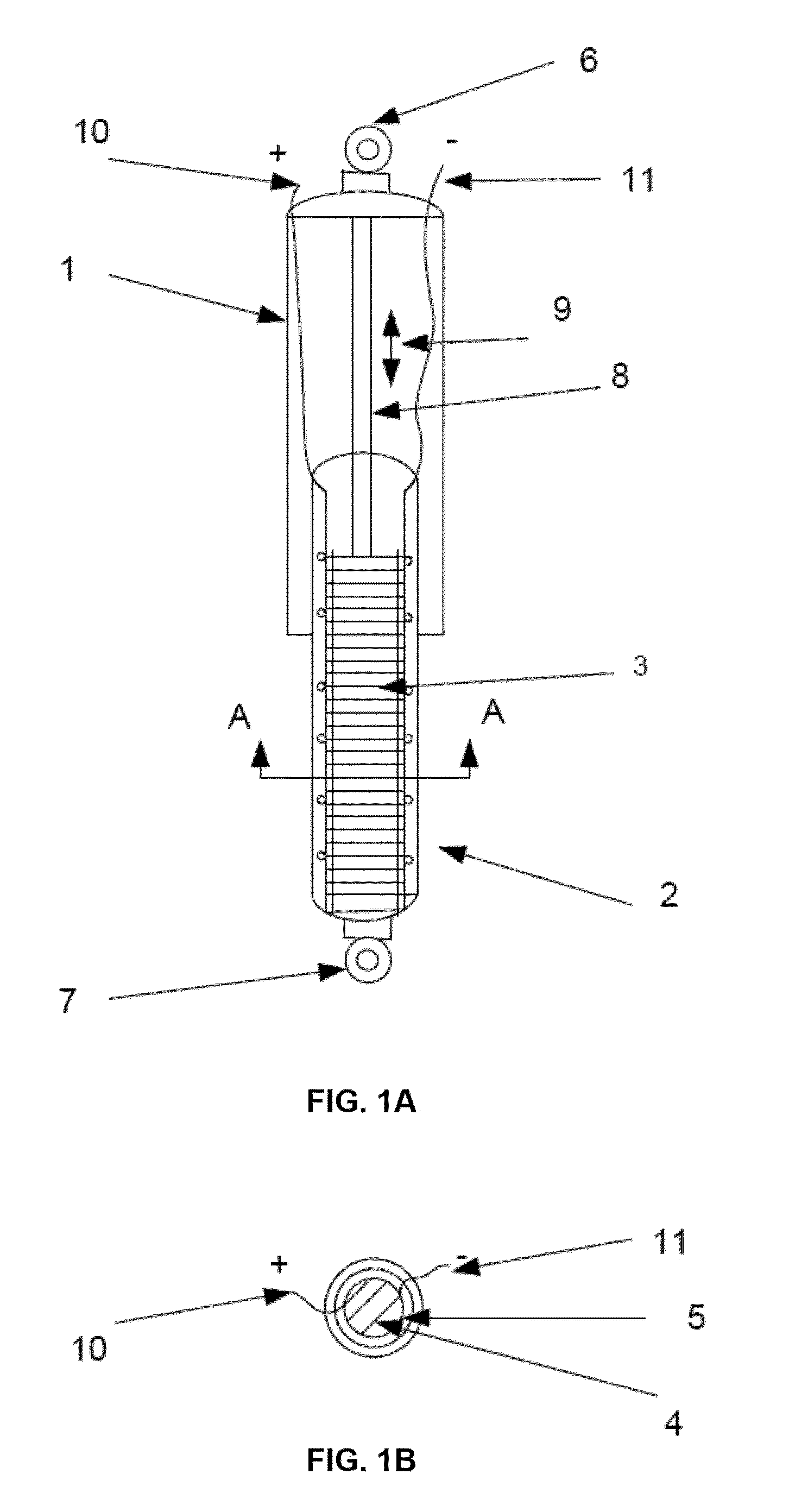Energy harvesting system
a technology of energy harvesting and energy harvesting, which is applied in the direction of liquid based dampers, machine/engines, home appliance efficiency improvement, etc., can solve the problem of electric energy to be generated
- Summary
- Abstract
- Description
- Claims
- Application Information
AI Technical Summary
Benefits of technology
Problems solved by technology
Method used
Image
Examples
Embodiment Construction
[0029]Improving vehicle energy efficiency is desirable with hybrid and electrical vehicle technology more commonplace. With road surfaces uneven and full of bumps, one method for improving vehicle efficiency is by capturing energy which is normally lost through heat, noise, vibrations, etc., as vehicles travel over these roads. The average bump height along an average road can vary from 2 mm to 6 mm while the frequency of the bumps can vary from 1 / 10 to 1 / 100 cm−1.
[0030]Dielectric elastomers, which are a type of electroactive polymers, may be used to capture and convert these vibrations from, e.g., the wheels, engine, seats, etc., for energy generation as the vehicle is in use. The types of engines may vary from internal combustion to electric engines or any other type of engine which may be used by any type of vehicle. Generally, dielectric elastomer generators comprise soft stretchable polymer materials such as acrylic, silicone rubber, polyurethane, etc., which may be placed betw...
PUM
 Login to View More
Login to View More Abstract
Description
Claims
Application Information
 Login to View More
Login to View More - R&D
- Intellectual Property
- Life Sciences
- Materials
- Tech Scout
- Unparalleled Data Quality
- Higher Quality Content
- 60% Fewer Hallucinations
Browse by: Latest US Patents, China's latest patents, Technical Efficacy Thesaurus, Application Domain, Technology Topic, Popular Technical Reports.
© 2025 PatSnap. All rights reserved.Legal|Privacy policy|Modern Slavery Act Transparency Statement|Sitemap|About US| Contact US: help@patsnap.com



